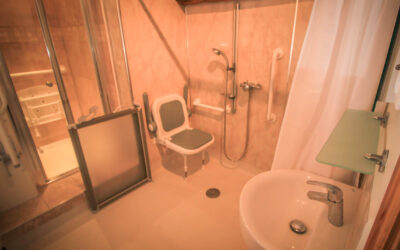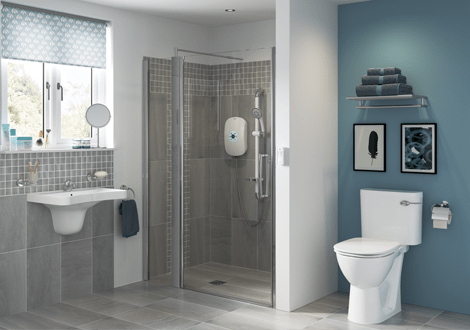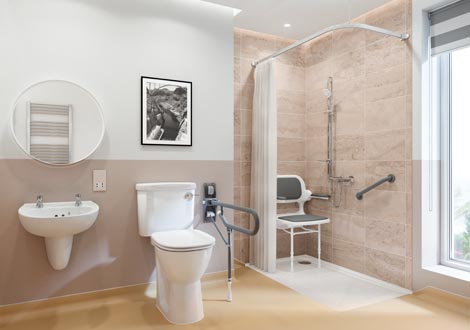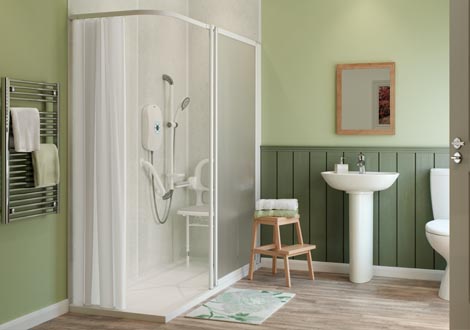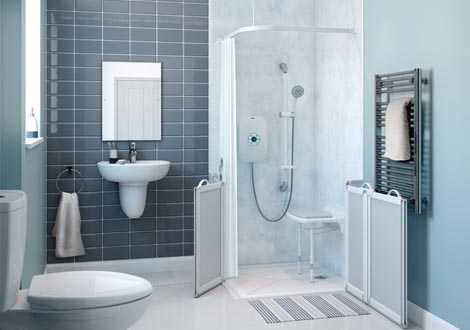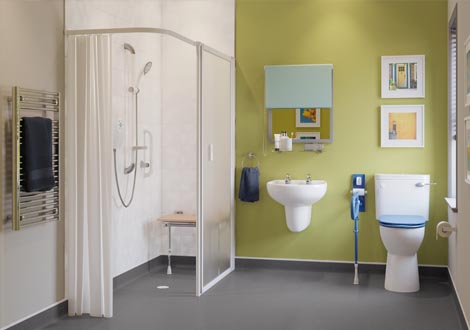Disabled Adaptations
If you need help and advice on the range of disabled adaptations available to you our expert team can help. You can get in touch with our friendly, professional team on 01432 272188.
Our Disabled Adaptations
We have considerable experience working with private and residential customers, housing associations and local councils delivering a variety of adaptations enabling our customers to maintain their independence.
Quality Assured
Certified Tradesmen
12 Month Guarantee
Family Business
Home Adaptations
Full Wet Room Installations
Garage Conversions
Ramp Installation
Widening Door Access
Safe & Secure
Anti Slip Flooring
Grab Rails
Hand & Fold-up Rails
Table of Contents
Completed Disabled Adaptations
The Buyers Guide to Disabled Adaptations
Getting help if you need it
Customer Testimonials
Grab Rails
Ramp Installation
Complete Garage Conversions
Full Wet Rooms
Non-slip Flooring
Widening Doors to Improve Access
Frequently Asked Questions
Contact Us
Related Articles
Get in touch to find out how we can help with your Disabled Adaptations
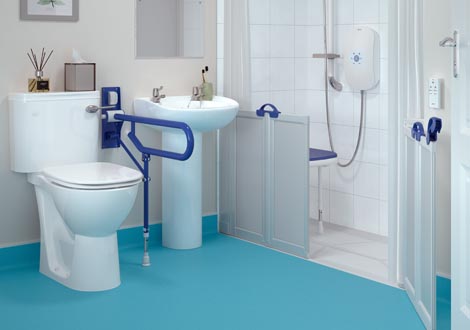
The Buyer’s Guide to Disabled Adaptations
For many of us ill health, mobility problems or simply the way our homes are designed can mean we need to make adaptations sooner or later. They make life easier and enable us to do the things we need to do with dignity and independence.
Whatever home adaptation you need and wherever you need it, GB Electrical & Building Services can offer a comprehensive service with the complete range of trade professionals you need. Whether you require relatively small adaptations or wish to undertake larger projects, it is important to get it right first time, to know exactly what is available and where best to place them in your home for the greatest benefit.
Choosing an approved service with a good local reputation is also important. We source many of our fixtures, fittings and materials locally from companies who, in turn offer discounts for local clients in Herefordshire. Those are savings we pass on to our customers, ensuring that your adaptations are made to last and giving you the peace of mind and the confidence to trust them, without spending more than you need to.
Getting help if you need it
If you are planning disabled adaptations for your home, costs can mount up and it is important to know if you are eligible for help and support in terms of grants and funding.
The most popular grant is the Disabled Facilities Grant which might be available to you through your local council.
For further details about the DFG and how to apply, we have compiled some useful resources here.
Everyone looking to install disabled adaptations is unique and every home is different. There is however a range of common adaptations designed to help and support the widest possible range of people and their needs.


Our In-House Occupational Therapist
Our In-House Occupational Therapist can offer all the help and advice you need with a detailed assessment of adaptations such as door widening, flooring, ramps and grab rails as well as wetroom or garage conversions.
If you need help and advice on the range of disabled adaptations available, you can get in touch with our friendly, professional team on 01432272188 to discuss your requirements and book an Occupational Therapist Assessment.
Our Customer Testimonials
We value our customers and their feedback. Here is a selection of our latest customer reviews:
"It does look very nice and the final result went above my initial expectations. Once the date was agreed it..."Mrs O. from Painscastle
"You’re a great company to work with, very prompt, efficient and helpful. The final result is really, really good, I..."Mrs H. from Hereford
"I’m happy with what’s been done on the whole. Stuart, my builder, was first class. Very friendly – I liked..."Mr W. from Monmouthshire
Have you worked with GB Group?
Rate them on SayHola


Grab Rails
Designed to help people with mobility impairments, grab rails can be fitted wherever they are needed in rooms such as bathrooms, wet rooms, bedrooms etc.
There are different types, such as heavy duty reinforced rails with fluted grips for safe gripping in wet environments and colour coding for those with visual impairments.
Plastic grab rails have a warm, ergonomic grip; reinforced with stainless steel they can be ideal for those with limited dexterity
Available in a range of colours and varying thicknesses and wall clearances, the modular nature of many grab rails can mean they can be positioned anywhere they are needed and angled if necessary to offer a bespoke adaptation for any need.
Other styles are available to match the style and decor of your home, such as stainless steel or epoxy coated stainless steel and onyx.
Hand & Fold-up Rails
Hand rails tend to be fitted on stairs around the newel to provide additional grip when using stairs.
Fold-up rails can be folded away when not in use and are ideal for multi-user bathrooms with limited space. They can also accommodate specific height requirements and some models feature a supporting leg to give extra rigidity and stability during use.
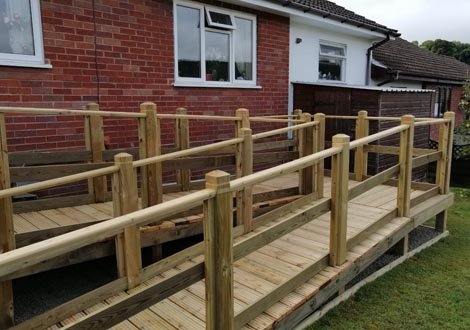
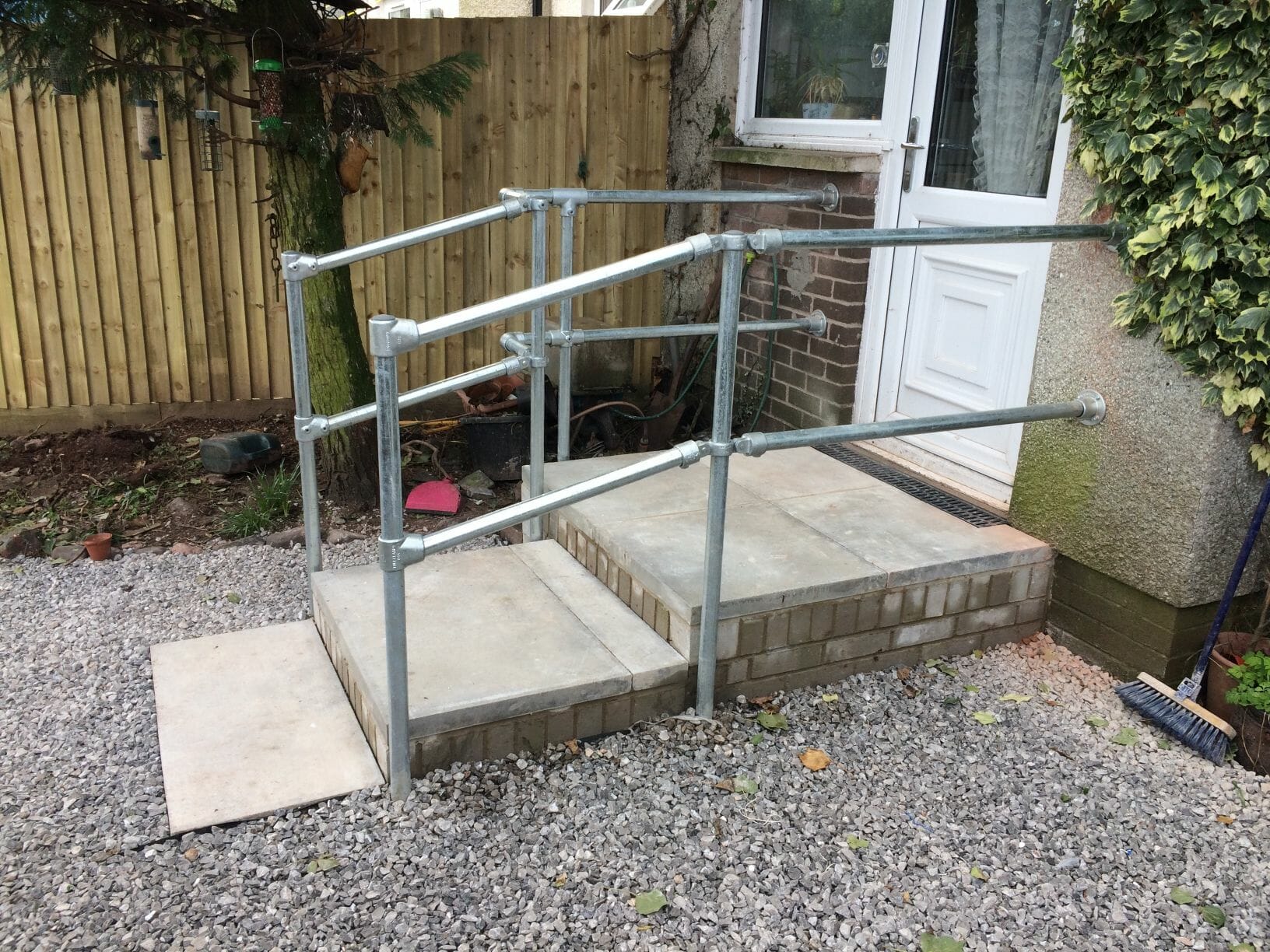
Ramp Installation
Ramps can make it easier to enter, leave and move around the home, particularly for wheelchair users.
Threshold ramps can provide a wide range of solutions for many access problems, delivering a safe gradient for doorways and steps.
Folding access ramps can be easily handled, packed away and relocated when necessary; they are designed with durability in mind and often feature smooth corners to prevent damage to flooring or upholstery.
Channel folding ramps are designed for use by mobility scooters and are ideal for entering or exiting vehicles.
Complete Garage Conversions
Despite being a large project, a garage conversion can make a real difference in terms of remaining in the home you love when disability or ill health makes it hard to access the upstairs areas of your home.
A garage can be converted into a bedroom, a wetroom or other space but there are a number of factors to consider such as access height and adequate space for widened doorways if wheelchair access is needed. Thought also needs to be given to services such as water or electricity and the potential need for a separate entrance.
All these things can pose a logistical challenge, however at GB Electrical & Building Services we have the size and the trade approved skills to undertake every aspect on your behalf.
Full Wet Rooms
A wet room is a safe and accessible option when using a bathroom becomes a challenge; it can also be a very good idea when you need to future-proof your home.
Wet rooms are designed to make personal care much easier, with sealed walls and sealed anti-slip floors.
If you are converting an old bathroom then often the same drainage points can be utilised for a bespoke wet room that is perfectly tailored to your needs with as little disruption as possible.
Non-slip Flooring
Non-slip flooring provides a much higher level of slip resistance in kitchens, walkways and wetrooms, places in the home where slips, trips and falls are a risk. It is durable, easy to keep clean and available in a wide range of styles to suit every budget.
At GB Electrical & Building Services our flooring specialists work with industry leading brands to provide safe, non-slip flooring anywhere in your home, helping our customers to enjoy safer and easier access to kitchens and walkways, lasting performance in wet environments and a range of styles and colours to suit your home perfectly.

Widening Doors to Improve Access
For a wheelchair user or individual with mobility issues to safely and comfortably navigate their home, doorways should be wider than they would normally be. This might be a problem as most doorways are narrower than the width of an average wheelchair.
Making adjustments to the width of doorways is a relatively simple job, taking less than a day in most cases; however other factors need to be taken into account.
Thinking about the angles at which the door is approached can often mean further changes are advised and accessibility, safety and compliance are all important parts of the project.
Frequently Asked Questions About Home Adaptations
At GB Electrical & Building Services we specialise in providing home adaptations for those planning for the future or looking to make life at home easier. With over 30 years of experience our dedicated team can deliver everything you need for the complete home adaptations package.
We offer help and advice on planning and funding your home adaptations and providing the occupational therapy assessments and reports to ensure you get exactly what you need. We can then provide the multi-skilled trade professionals who will work together to make it a reality.
If you are thinking about home adaptations, here are some of the most frequently asked questions we come across.
What are home adaptations?
Home adaptations relate to the changes you can make to your home to improve independence and to make life easier and safer to move around and do everyday tasks. Local authorities offer assessments for your home and recommendations about the changes that might help; these local council assessments are free.
How can adaptations help you live at home?
Making changes to your home can make a real difference in helping you to stay there for longer, living as independently as possible with peace of mind and dignity. Even minor adaptations can make a big difference. There are a wide range of home adaptations on the market to help you continue living safely at home. Advice and support is available to help you get the right ones for you along with information regarding funding to help with costs.
Should you convert your garage into a bathroom?
Converting your garage into a bathroom or kitchen is possible but can prove considerably more costly when compared to converting it into an additional bedroom or living room.
How much does it cost to convert the garage into a bathroom?
If you want to convert a garage into a bathroom or kitchen, you will need to factor in the cost of utilities such as water, gas and electricity.
A basic conversion will cost in the region of £10-15k, for higher specifications the cost might be £20-25k.
Garage conversions add value to a home if you create space for other rooms too, such as additional bedrooms or living spaces.
What are the different types of garage conversion rooms?
There aren’t many restrictions on the types of room you can convert a garage into, examples include living rooms, utility rooms, kitchens, bathrooms, bedrooms, gyms, home offices, adapted bathrooms and even man caves or home cinemas.
Can you put a bathroom in a detached garage?
Yes, however if drainage is a problem then you might have to consider an macerator toilet. Careful thought needs to be given to the space you have available as it might affect what you can have inside your bathroom such as a shower, bathtub, toilet and sink. Consideration should also be given to the transition between hot to cold environments and the possibility of a link between the two should also be considered.
Do garage conversions require planning permission?
It is always advisable to check with your local authority, only around 10% of garage conversions will require full planning permission with the rest falling under permitted development rights. These rights ensure that internal work that doesn’t enlarge existing structures can progress directly to the building regulations stage.
What do you need to know about door widening?
The process generally involves removing a small section of drywall in order to inspect the wall’s interior and identify the position of wiring and other features that need to be avoided.
Light switches and electrical outlets might also need to be relocated to allow for the widening process.
It also needs to be established if the wall is load or non-load bearing remembering that internal walls can also be load bearing, a lintel would need to be installed if so.
How long does it take to widen a door?
At GB Electrical & Building Services, we would aim to complete this in 1-2 days but it can depend on factors such as how the doorway is built, stud work and whether the wall is load bearing.
How wide is the door for wheelchair access?
The recommended door width for wheelchair access is at least 800mm. Most wheelchairs measure 24-27 inches from wheel to wheel. This width allows for a wheelchair to move freely through a door.
Who pays for the Disabled Facilities Grant?
If you need large scale changes to your home to make it accessible you might be eligible for the Disabled Facilities Grant, also referred to as a DFG grant.
The DFG grant is paid by your local authority or, in the case of Northern Ireland, The Local Housing Executive.
What are grab rails?
Grab rails are a home adaptation designed to safely offer help with mobility when doing a variety of tasks around your home including the bathroom.
They are a practical and durable solution that can make a big difference to the lives of elderly or disabled users, giving them the confidence to do things they might otherwise find difficult.
Where do you find elderly grab rails?
At GB Electrical & Building Services we can provide a range of grab rails. We install several types and the AKW series 1400 is one of our most popular grab rails with its plastic, fluted covering.
We can also fit any grab rails supplied such as specialist rails for stairs. It is worth noting that we always check the strength of the walls where rails are to be fitted and will strengthen them with timber battens if needed.
Can you install handrails on stairs?
Yes, if the existing stair rail is loose in any way or not strong enough to give you confidence then it is definitely time to replace it.
The same goes for any outdoor rails, fixtures or steps. Handrails on stairs can have a big impact towards keeping people safe, especially on multi-level decks.
Are handrails safe?
If they are fitted professionally, then yes. Handrails come in a wide variety of different shapes, sizes and finishes. No matter which you need or where in your home you need to install them, GB Electrical & Building Services can help.
How far from the wall should the handrail be?
If you have a single railing on a staircase then the inside (stair side) edge must be 31.5 inches away from the wall on the opposite side. You must measure this distance from the side of the handrail closest to the wall, extending the line to the opposite wall.
What is the standard handrail height for stairs?
To meet building standard requirements, the stair railing should be mounted so that the handrail is positioned 34-38 inches above the front edge of the stair nosings (the horizontal protruding edge of the stair where foot traffic is heaviest.)
What is non slip flooring?
Typically non slip flooring is around two meters wide and can be purchased as a complete roll or cut from the roll itself. The minimum sized cut is 2x2m square. At GB Electrical & Building Services we install Altro flooring which is 2mm thick, offering excellent wear characteristics suitable for barefoot or shoe traffic.
What type of flooring should I use in a wet room?
Wet room areas such as showers and washrooms require flooring that features a textured surface and is coved up to the walls. Any seams or joints are thermo welded to completely seal the floor.
GB Electrical & Building Services recommend and fit Altro flooring.
What are disabled access door systems?
The Disability Discrimination Act (DDA) was introduced to ensure that anyone with a disability can gain easy access to any public premises. Disabled door access systems form an important part of compliance.
Disabled access door systems are an automatic door system consisting of a sliding or a swinging door. Typical features include automatic door openers or push button/fob operation.

